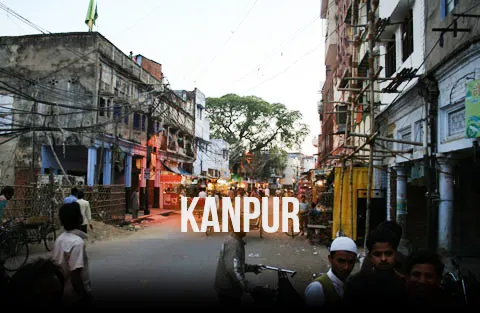The Story
In the vibrant city of Kanpur, home to a population of 3 million, resides Loha, a skilled electrician at the age of 28. This bustling metropolis, unfortunately, suffers from persistent power outages lasting an unbearable 15 hours. Known for his remarkable ability to pilfer electricity, Loha assumes the role of a modern-day Robin Hood, redistributing stolen power to the needy while charging the affluent for his services. His noble actions aim to bring light and hope to the impoverished neighborhoods affected by the darkness imposed by frequent power cuts. Through clandestine connections stretching from one community to another, Loha ensures that homes, factories, and businesses can operate without disruption.

Meanwhile, Ritu, a determined and groundbreaking individual, assumes the esteemed position of the first female chief at the Kanpur Electricity Supply Company (KESCO). Committed to eradicating powerlessness in the city, Ritu faces a significant challenge. Electricity theft, accounting for nearly 30 percent of all losses incurred by KESCO, exacerbates the crisis at hand. To combat this rampant misdeed, Ritu establishes a specialized task force dedicated to tackling the issue head-on. With joint efforts from KESCO officials and the local police, they embark on an annual cleanup campaign targeting all illegal electricity connections, including those established by Loha and his counterparts.
Ritu’s relentless endeavors to cleanse the city and chart a new path for Kanpur’s energy landscape begin to bear fruit. However, as the scorching Indian summer takes hold, the electricity problem escalates into a full-blown crisis, unleashing dire implications on the lives and livelihoods of its citizens. Frustrated and desperate, the people of Kanpur take to the streets, resorting to demonstrations and sporadic acts of violence. Sensing an opportunity, an opportunistic rising politician capitalizes on the public’s anger, using it to fuel his own ambitions.
The plight of Kanpur unveils a modern dystopia characterized by urban decay and an overwhelming desperation born out of the absence of electricity. This localized crisis serves as a stark reminder of the pervasive energy poverty prevalent throughout India, where a staggering one-third of the population remains devoid of this fundamental necessity. Even those fortunate enough to have access to electricity find themselves grappling with power cuts that dictate their daily routines. “Powerless” offers a poignant perspective on an untold narrative within one of the world’s fastest-developing economies, shedding light on the urgent need for sustainable and inclusive energy solutions.
Technical specifications
Format:
DCP
HDCAM
Digibeta
Sound:
5.1 Digital
Stereo
Aspect Ratio:
Flat
Duration:
82 and 52 mins
Country of Production:
India
Country of Co-Production:
USA

Kanpur
Globally, an astounding number of 1.5 billion individuals endure life without access to electricity, and among them, 400 million reside in India.
The ramifications of this energy dearth are devastating, wreaking havoc on livelihoods, education, and health. Recognized by the United Nations as a primary obstacle to social and economic progress, the quest to overcome this predicament has become paramount. Within this landscape of energy deprivation, Kanpur, India, stands at the epicenter of the crisis. Home to a population of 3 million, this city is plagued by excruciating power cuts that persist for a staggering 12 to 15 hours each day. The scarcity of reliable electricity has transformed what was once a thriving industrial hub into an urban nightmare.

Kanpur, despite its struggles, remains a prominent leather capital within India, catering to renowned Western brands like Gucci, Levi’s, and Mango. Nevertheless, it also bears the unfortunate distinction of being one of the most polluted cities in the world. Over 400 leather tanneries operate within its boundaries, and the industry suffers immensely from the pervasive power cuts. Desperate to meet their energy demands, these establishments heavily rely on diesel-powered generators. However, this dependence not only saturates the city with exhaust emissions from thousands of generators but also inflicts grave damage upon the area’s groundwater. Consequently, the detrimental effects of the energy crisis extend far beyond the leather industry, impacting public life at large.
The city’s plight manifests in the loss of livelihoods, deplorable living conditions, and a public health catastrophe. Kanpur bears the unfortunate distinction of having the highest rate of tuberculosis in India, a direct or indirect consequence of the energy crisis. Within this distressing context, individuals who cannot afford the exorbitant prices of diesel fuel resort to the desperate act of electricity theft. Power pilfering has become an ingrained aspect of life in Kanpur, despite its dangers and the inherent risks associated with tampering with high-wattage electric cables and transformers.
The tragedy of Kanpur is that of a once proud city brought to its knees, its vibrant past reduced to mere remnants. Where once phalanxes of workers proudly marched to colossal factories, their footsteps accompanied by the resonating sirens of industry, now stands a landscape of abandoned shells. Within this desolation, its inhabitants grapple with the arduous task of eking out a meager existence, their dreams overshadowed by the harsh realities of an energy-starved environment.
Director’s Statements
Fahad’s journey begins in Chamanganj, Kanpur, a neighborhood he was born into but later left with his parents in search of a better future. Having had the privilege of living, studying, and working in various parts of the world, Fahad’s memories of Kanpur are dominated by the scorching, water-scarce summers and the absence of electricity. Recollections from his childhood echo the struggles faced by relatives who lost their jobs when the nationalized mills in Kanpur closed down. As the years went by, the power situation deteriorated further, putting people’s livelihoods at stake and leaving behind stories of family friends and loved ones who suffered financial losses.
In many ways, Loha Singh embodies the essence of Kanpur’s history. He finds himself confined to a livelihood that revolves around stealing electricity, a dangerous and life-threatening task. Yet, he carries out his actions with a distinct Kanpuria flair, showcasing his resilience and determination.
Years later, when Fahad returned to Kanpur, he discovered that the situation had remained largely unchanged. The city and its people looked back with a bitter nostalgia, mourning the loss of a glorious past while facing an uncertain future.
The story that compelled Fahad to film in Kanpur resonates with the experiences of most small towns across the country. As someone who has spent their entire life in another industrial town, Ghaziabad, Uttar Pradesh, Deepti understands the impact of day-long power cuts and how they shape people’s lives.

Ritu, with her reformist instincts and unwavering determination to bring change to the city, stands in contrast to Loha, a cunning and resourceful thief. However, both of them are driven by a common goal—to illuminate lives and bring about a positive transformation.
Kanpur, in many ways, stands at the forefront of globalization and serves as a microcosm that exposes the infrastructure challenges faced by India today. It becomes a character in the film itself, intertwining its struggles and complexities with those of its main protagonists.
Energy is often taken for granted in developed nations, but in India, many individuals spend their entire lives without ever flicking a switch to turn on an electrical device. The energy crisis in India extends beyond local implications and finds resonance in global issues such as climate change and corporate social responsibility. While some villages in India lack electricity entirely, Kanpur vividly illustrates how the absence of energy perpetuates a cycle of poverty.
